Frankly Frankenstein
My guess is that even people who’ve never read the novel or seen the Boris Karloff version likely recognize that “Frankenstein” signifies a human-made scientific creation that bites back. (Though they probably do confuse which is the creator and which is the actual monster.)
Here in the 21st century, what Mary Shelley depicted way back at the start of the 19th is embedded in our cultural collective consciousness, even for those people who don’t pay attention to the culture unless it involves Taylor Swift, because of how often it actually occurs throughout history. Take your pick of technological disasters, the latest perhaps being AI.
Of course the reason why Shelley’s Frankenstein: or, The Modern Prometheus is a canonical work even before SF gained some legitimacy in academia is that this isn’t just a gothic horror story (though it is of course that).
The many layers of the novel depict the alienation of:
- God from humankind, and vice versa
- Parents from children, and vice versa
- Workers from what they produce and how they produce it
- Human beings from one another based on appearance and social class
Not to mention themes of romanticism and nature versus materialism and industrial capitalism, Promethean ambition and fallibility, loss of innocence, the possibilities and pitfalls of scientific advancement, the horror of childbirth.
While legends and folktales of golems and other such magical beings predate Frankenstein, Mary Shelley earns the title as the godmother of SF because she incorporates all the themes and conjectures that characterize the genre, particularly relevant in these days of climate change and thinking machines. Which is also why so many of her progeny revisit and reinterpret the Frankenstein mythos.
As its title clearly indicates, Mary and the Birth of Frankenstein is one of the latest examples. Anne Eekhout (in collaboration with English translator Laura Watkinson) imagine the genesis of Mary Shelley’s novelistic alternating between two settings: as a fourteen year old banished from her father’s household and detested new wife and stepmother (Mary’s mother having died giving birth to her) to the Scottish household of the radical William Baxter (told in the first person by Mary), and four years later in Lake Geneva (told in the third person) following Shelley’s loss of her own child with Percy Bysshe Shelley and when the archtypical tale is conceived as the result of a challenge to write a ghost story.
Eekhout suggests the genesis of Frankenstein began with imaginings (or maybe not) of strange creatures in the Scottish highlands combined with the actually strange Baxter daughter, with whom the young Mary has vague and unfulfilled erotic feelings. In Geneva, sexual politics also play a role as Mary ponders the implications for her free love relationship with Percy, in particular his pursuit of Mary’s half-sister, that she doesn’t entirely buy into, as well as unequal child rearing responsibilities.
Both settings are historically accurate insofar as the timelines and personages involved. Of course, regarding the particulars, as Eekhout puts it in her Acknowledgments, “I found the slivers of a life from which stories can grow.” Or as this conversation she posits between Mary and Lord Byron (nicknamed “Albe” in reference to his initials LB) puts it:
“Perhaps I’m a writer like my parents,” [Mary] says. “Perhaps I can only write real things.”
“I am fairly certain that is not the case.” Albe smiles. “Is the difference between real and not real truly that great?”
Prompted by the news last December that Michael Bishop passed away, I finally got around to reading Brittle Innings, one of many books I bought a while ago but stayed stuck in my ever growing TBR pile. It did not deserve to be kept in a holding pattern for such a long time. A coming of age novel, Brittle Innings is a brilliant take on the Frankenstein trope in which the monster, last seen on an ice raft drifting off in the Arctic wasteland at the conclusion of Shelley’s tale, by a circuitous route finds his place in society as a minor league ballplayer in the deep south during World War II. Thanks to the Creature’s wingspan and batting prowess, he has legitimate hopes of making it to the big leagues; at a time when most draft-eligible talent is fighting overseas, a few scars and disfigurements aren’t going to bother anyone.
Following the original’s narrative technique, Brittle Innings is an epistolary — the story is primarily recounted to a sports journalist by baseball scout Danny Boyles about his short-lived stint as a 17 year-old prospective shortstop in the Chattahoochee Valley League rooming with the monster, going by the bane of Henry “Jumbo” Clerval (Henry Clerval is the close friend of Dr. Frankenstein and likewise in Brittle Innings becomes Boyles friend and protector). Within that narrative are also excerpts from the monster’s diary about how he travelled from the Arctic and came to learn to play baseball. This kind of framing is meant to give the appearance that the related details are not fictional but actual.
Like the monster, Danny Boyles is also alienated from larger society, his prowess on the baseball diamond his only redemption, and a redemption that eventually proves his undoing. Struck dumb by an uncaring father, who nonetheless is responsible for fostering his baseball talent, (note the classic Frankenstein trope of the uncaring creator incorporating living potential), Danny excels on the diamond, but, like any precocious adolescent (as well as someone created out of monstrous circumstances, i.e., Danny’s muteness is a result of a combination of his father’s beatings and later rape and robbery by a soldier), is learning how to interact with a range of sometimes strangely difficult personalities (and unlike the Creature, a romantic interest).
The title Brittle Innings refers both to the point in the game where a team can win or lose, as well as the American myth in which talent alone determines success, though it happens only on the baseball diamond and not in “real” life. Bishop makes a point of the racial disparities in the 1940s when baseball was rigidly segregated, as well as the unhappy domestic lives of many of the players off the field. All of which reiterate the alienation of the Frankenstein Creature and, by implication, the alienation of ourselves from societal expectations.
Brian Stableford called Brittle Innings “the best sequel imaginable” to Shelley’s Frankenstein. The same claim can be made for Poor Things: Episodes from the Early Life of Archibald McCandless, M.D., Scottish Public Health Officer by Alasdair Gray, a 1992 novel recently brilliantly re-imagined by director Yorgos Lanthimos film version.
The novel is ostensibly an autobiography by Dr. McCandles, supposedly edited by Alasdair Gray who provides critical and historical endnotes to provide the appearance of academic authority, recounting his relationship to Dr. Godwin Baxter (William Godwin was Mary Shelley’s father), sometimes called “God” for short (get it?), who bears more than a coincidental appearance to the Frankenstein monster, and Baxter’s ward, Bella. As the reanimated corpse of a suicide despondent over an unwed pregnancy, Bella’s personality is tabula rasa thanks to the implanted brain of the suicide’s unborn child. Some hilarity ensues as a seemingly grown woman exhibits infantile behavior.
As she quickly learns language and adult habits, Bella soon develops a hedonistic sexual appetite, leading to various amorous and travel adventures with a foppish and foolish suitor. Eventually, Bella becomes a liberated feminist (Mary Shelley’s mother was the noted feminist Mary Wollstonecraft who wrote A Vindication of the Rights of Women). While fashioning an identity independent of men, she does marry McCandles, mostly as a matter of convenience, becoming a medical doctor herself, no easy feat for women in the early 20th century, and an active proponent of socialist politics. And she takes a new name for herself, Victoria, yet another symbol of her independence from being defined by others.
Employing the same literary tricks as Frankenstein and Brittle Innings to provide the appearance of factual narrative, Gray throws a wrench into the entire framework with an appendix containing a posthumous letter from Bella to her children that her husband’s autobiography is just so much balderdash. Yet, careful readers of the endnotes come across clues that cast doubt that Victoria perhaps doth protest too much.
Poor Things the novel is indeed a worthy sequel to Frankenstein, chock full of complex questions related to identity and the “gray” (pardon the pun) blurriness of who gets to tell what is fact and what is not. Poor Things the movie is a worthy adaptation of the novel. Read the book first, though.
For that matter, if you haven’t read Frankenstein, stop what you are doing and read that first. Then you can maybe look at the Boris Karloff movies. But never the other way around. That would be a monstrous mistake.
David Soyka is one of the founding bloggers at Black Gate. He’s written over 200 articles for us since 2008. His most recent was My Three Problems with The Three-Body Problem.
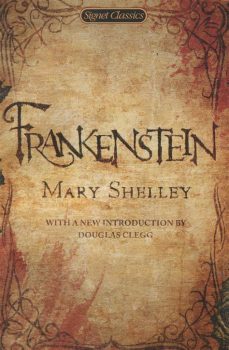
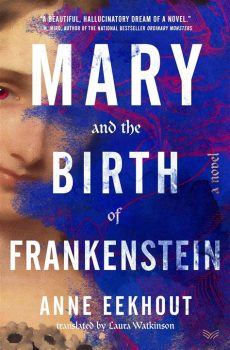
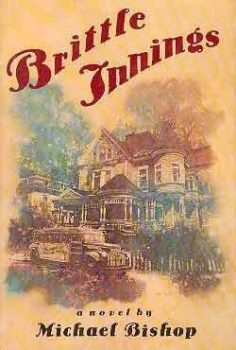
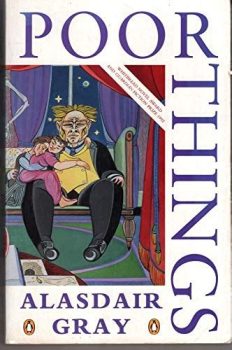
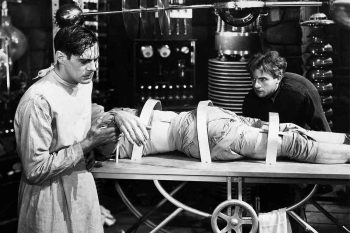
I’m glad to see Poor Things discussed here; I read it some years ago and thought it an excellent reconstruction of the Frankenstein narrative.
The differences between the novel and the original films seem to me to point at different ideological and cultural tendencies. On one hand, the novel shows the creature as brilliant, and originally innocent, but embittered and turned murderous by abandonment, abuse motivated by his physical appearance, and betrayal; this seems to reflect the view of criminals as a socially oppressed class, one of whose early proponents was in fact Mary Shelley’s father, William Godwin. On the other, the film shows the monster as created with a defective brain with inherent tendencies to violence, together with low intelligence, all of which recalls the idea of the criminal as an evolutionary atavism that became widespread in post-Darwinian criminology in the nineteenth century. Both stories appear to be myths about criminality—but very different myths.
[…] Just published a new essay at Blackgate. This is a review of three books that riff off of Mary Shelley’s Frankenstein. Check out Frankly Frankenstein. […]